33 1/3 Revolutions Per Monkee: The Monkees on Record, Part 2
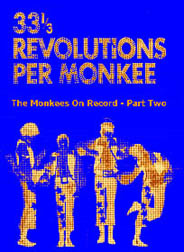 You say we’re manufactured, to that we all agree.
You say we’re manufactured, to that we all agree.
So make your choice and we’ll rejoice in never being free.
Hey, hey, we are the Monkees, we’ve said it all before,
the money’s in, we’re made of tin, we’re here to give you more.
- Ditty Diego War Chant from the soundtrack to the Monkees one and only feature film, Head.
PISCES, AQUARIUS, CAPRICORN, & JONES LTD Colgems COM/COS 104 November 1967. Six months may not sound like a lot of time to produce an entire album and have it out to the public but it was practically leisurely by Monkee standards. Headquarters had proven that the Monkees could produce an album like a normal band and for their follow-up release they pulled out all the stops and created what critics and f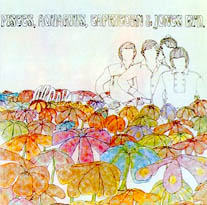 ans alike consider their finest work. While Nesmith only wrote two of the tracks on Pisces (Don’t Call on Me and the psychedelic Daily Nightly), his presence is at its most pronounced vocally with Salesman (written specifically for one of the best episodes of the television series, The Devil and Peter Tork), The Door Into Summer, Love is Only Sleeping and What Am I Doing Hangin’ ‘Round. The half of the album left for the rest of the group contains the hits Pleasant Valley Sunday and Words, the fan favorite Star Collector (an ode to the band’s groupies) and two strong performances from Davy Jones on She Hangs Out and Cuddly Toy.
ans alike consider their finest work. While Nesmith only wrote two of the tracks on Pisces (Don’t Call on Me and the psychedelic Daily Nightly), his presence is at its most pronounced vocally with Salesman (written specifically for one of the best episodes of the television series, The Devil and Peter Tork), The Door Into Summer, Love is Only Sleeping and What Am I Doing Hangin’ ‘Round. The half of the album left for the rest of the group contains the hits Pleasant Valley Sunday and Words, the fan favorite Star Collector (an ode to the band’s groupies) and two strong performances from Davy Jones on She Hangs Out and Cuddly Toy.
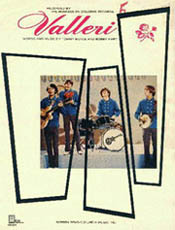 Trivia – The title for this album comes from the zodiac signs of each member. Mickey was a Pisces, Peter an Aquarian, and since both Mike and Davy were Capricorns, Jones retained his last name. Released early into the second season of the television series, Pisces went over a million dollars in sales in pre-orders and was already certified gold before it reached stores. This was the first Monkees album to feature a conceptual cover design. The artwork of the four faceless members standing in a field of flowers with their trademark guitar logo half obscured was one of their first public displays of their dissatisfaction with their manufactured image.
Trivia – The title for this album comes from the zodiac signs of each member. Mickey was a Pisces, Peter an Aquarian, and since both Mike and Davy were Capricorns, Jones retained his last name. Released early into the second season of the television series, Pisces went over a million dollars in sales in pre-orders and was already certified gold before it reached stores. This was the first Monkees album to feature a conceptual cover design. The artwork of the four faceless members standing in a field of flowers with their trademark guitar logo half obscured was one of their first public displays of their dissatisfaction with their manufactured image.
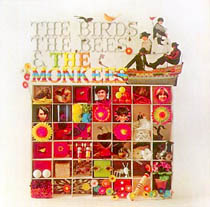 THE BIRDS, THE BEES, & THE MONKEES Colgems COM/COS 109 April 1968. With the writing on the wall that the second season of the Monkees television series would also be their last, Colgems wasted no time in releasing one final album while there was still a prime time show to promote it. The rushed nature of this production shows and the uneven track mix ranges from impressive (Daydream Believer, the last major hit for the group) to experimental (Nesmith’s Magnolia Simms that still puzzles fans to this day). A few strong contributions were still left like Valleri and Nesmith’s Tapioca Tundra which formed the basis of the album’s second single release but the majority of the songs have an unfinished feel that left fans wondering what the future held for the group once the series was gone.
THE BIRDS, THE BEES, & THE MONKEES Colgems COM/COS 109 April 1968. With the writing on the wall that the second season of the Monkees television series would also be their last, Colgems wasted no time in releasing one final album while there was still a prime time show to promote it. The rushed nature of this production shows and the uneven track mix ranges from impressive (Daydream Believer, the last major hit for the group) to experimental (Nesmith’s Magnolia Simms that still puzzles fans to this day). A few strong contributions were still left like Valleri and Nesmith’s Tapioca Tundra which formed the basis of the album’s second single release but the majority of the songs have an unfinished feel that left fans wondering what the future held for the group once the series was gone.
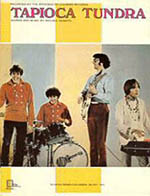 Trivia – Birds was originally intended only for a stereo release as monoral recordings were considered outdated by 1968. When the foreign territories protested, a mono mix was hastily conjured up to appease them. There are a number of significant differences between the two mixes and the mono version of this record is considered one of the rarest Monkees albums. Birds was originally conceived as a double album with each side dedicated to a different member but recording time was scarce in 1968 with the Monkees completing their television series, starting a feature film, and touring the Far East. When Colgems decided to rush the record out, they tacked on a few left over songs from the television series with what had already been recorded and went with a single record release. The cover of this album continues the conceptual trend started with Pisces and displays the Monkees lost among a shelf filled with curious. Whether intentional or not, this was an accurate representation of the musical contents of the album.
Trivia – Birds was originally intended only for a stereo release as monoral recordings were considered outdated by 1968. When the foreign territories protested, a mono mix was hastily conjured up to appease them. There are a number of significant differences between the two mixes and the mono version of this record is considered one of the rarest Monkees albums. Birds was originally conceived as a double album with each side dedicated to a different member but recording time was scarce in 1968 with the Monkees completing their television series, starting a feature film, and touring the Far East. When Colgems decided to rush the record out, they tacked on a few left over songs from the television series with what had already been recorded and went with a single record release. The cover of this album continues the conceptual trend started with Pisces and displays the Monkees lost among a shelf filled with curious. Whether intentional or not, this was an accurate representation of the musical contents of the album.
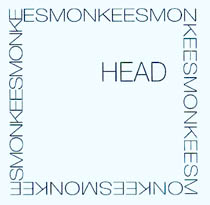 HEAD Colgems COSO 5008 December 1968. With the television series behind them, the Monkees felt their immediate future was in feature films. Their first (and only) offering was a surrealistic hodge podge of ideas strung together by the central theme of destroying their manufactured image. Being at ground zero, the Monkees couldn’t tell that the public had already embraced them for what they were and did not care. The soundtrack displays a marked upturn from the makeshift Birds with Porpoise Song (written specifically as the theme for the movie) and Nesmith’s Circle Sky (performed live in the film but represented on the album by an inferior studio cut Nez preferred) the standouts. Peter Tork stepped up on this release and contributed the mystically dated Can You Dig It and the remorsefully relevant Long Title: Do I Have To Do This All Over Again. The two remaining tracks were As We Go Along that features some excellent vocals by Mickey, and Harry Nilsson’s Daddy’s Song (a failed follow-up to his superior Pisces contribution Cuddly Toy) which gave Davy something to do. With only six actual songs and the cloud of flop film looming over it, Head was headed for obscurity almost as soon as it was released and represented the first major failure for the group.
HEAD Colgems COSO 5008 December 1968. With the television series behind them, the Monkees felt their immediate future was in feature films. Their first (and only) offering was a surrealistic hodge podge of ideas strung together by the central theme of destroying their manufactured image. Being at ground zero, the Monkees couldn’t tell that the public had already embraced them for what they were and did not care. The soundtrack displays a marked upturn from the makeshift Birds with Porpoise Song (written specifically as the theme for the movie) and Nesmith’s Circle Sky (performed live in the film but represented on the album by an inferior studio cut Nez preferred) the standouts. Peter Tork stepped up on this release and contributed the mystically dated Can You Dig It and the remorsefully relevant Long Title: Do I Have To Do This All Over Again. The two remaining tracks were As We Go Along that features some excellent vocals by Mickey, and Harry Nilsson’s Daddy’s Song (a failed follow-up to his superior Pisces contribution Cuddly Toy) which gave Davy something to do. With only six actual songs and the cloud of flop film looming over it, Head was headed for obscurity almost as soon as it was released and represented the first major failure for the group.
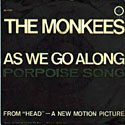 Trivia – Head was one of the first albums to have a Mylar cover. The reflective silver surface was the idea of producer Bert Schneider so that when a person looked at it they would see their own head on the cover! Part of the reason for the failure of the film at the box office was the advertising campaign. When the Monkees were deemed too juvenile for mainstream audiences, a more intellectual promotion was created that did not feature them at all! When this failed to lure in the more mature crowd,Columbia redid the ads to highlight the group but it was already too late. While the film is heavy handed and disjointed there is still a lot to enjoy including the music. Any movie that opens with the Monkees committing suicide by jumping off a suspended arch bridge to avoid a pursuing crowd of screaming fans can’t be all bad!
Trivia – Head was one of the first albums to have a Mylar cover. The reflective silver surface was the idea of producer Bert Schneider so that when a person looked at it they would see their own head on the cover! Part of the reason for the failure of the film at the box office was the advertising campaign. When the Monkees were deemed too juvenile for mainstream audiences, a more intellectual promotion was created that did not feature them at all! When this failed to lure in the more mature crowd,Columbia redid the ads to highlight the group but it was already too late. While the film is heavy handed and disjointed there is still a lot to enjoy including the music. Any movie that opens with the Monkees committing suicide by jumping off a suspended arch bridge to avoid a pursuing crowd of screaming fans can’t be all bad!
Coming Next Week – The final three and the case of the missing Monkees!
